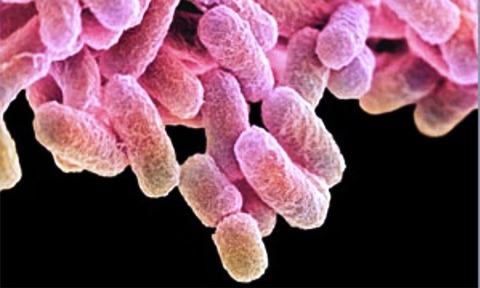Scientists speed synthetic chemicals creation
24 Dec 2014

A team of scientists at the Wyss Institute for Biologically Inspired Engineering and Harvard Medical School has laid the foundations for a future in which chemical factories are “colonies of genetically engineered bacteria”.
The scientists, led by Harvard geneticist George Church, modified the genes of bacteria in such a way that they can now programme exactly what chemical they want the cells to produce through their metabolic processes, and how much of it.
A full account of the study has been published in the journal Proceedings of the National Academy of Sciences.
“This advance has implications for pharmaceutical, biofuel, and renewable chemical production
Wyss Institute director Donald Ingber
The research team said that, although not a new concept, its findings could promote up to a 30-fold increase in chemical output.
The technique will allow scientists to tap an almost endless list of chemicals that they can choose to produce using any type of bacteria, the researchers said.
“This advance has implications for pharmaceutical, biofuel, and renewable chemical production,” said Wyss Institute founding director Donald Ingber.
“By increasing the production output by such a huge factor, we would not only be improving current chemical production but could also make economical production of many new chemicals attainable.”
The Wyss Institute team has achieved this by using evolutionary mechanisms to ’trick’ the bacteria into self-eliminating the cells that are not high-output performers, ridding the entire process of the need for human and technological monitoring to make sure the bacteria are producing efficiently, and therefore hugely reducing the overall timescale of chemical production, the researchers said.
“We make the bacteria addicted to the chemicals we want them to produce,” said Jameson Rogers, a lead co-author of the study.
“Then, we treat them with an antibiotic that only allows the most productive cells to survive and make it on to the next round of evolution.”
According to the researchers, the technique makes a desired chemical product essential to the bacteria’s survival by modifying their DNA so that antibiotic-resistant genes are activated, but only in the presence of a certain chemical, such as the one that is desired for production.
At the same time, the genetic modification makes the low-output chemical producers highly susceptible to being killed off by antibiotics, the researchers said.
Only the most productive cells generate enough of the desired chemical to be completely resistant to the antibiotic and survive to go onto the next round of evolution. As each evolution cycle progresses, the bacteria become more and more effective at producing the desired chemical as they use the ’survival of the fittest’ principle to stamp out the weakest producer cells.

